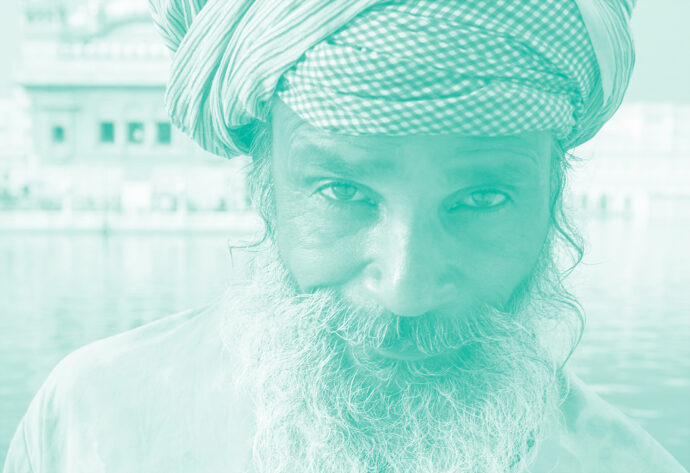Photo © James Foster
The Problem With Keeping So Many Photos; And It’s Only Going To Get Worse
Imagine if you will; before you is a table stretching 40 feet long and 10 feet wide. The table is entirely covered with shoeboxes. Each box is packed full, end to end, with 4×6” photos spanning the entirety of your time using a digital camera (and even some scanned photos).
Your phone rings. It’s your Mom. She wants a photo of your daughter taken about 3 years ago and another one from the family gathering in 2008..
Annnnnnddd … go.
How Lightroom Face Detection Can Be Of Use To You
I have over 240,000 images in my Lightroom catalog going back to 2001 when I bought my first digital camera. That’s a lot of photos. They started out as family pictures but as the DSLR market matured, I started shooting more of my work images digitally.
It gets a bit overwhelming after a while but the latest edition of Adobe Lightroom, Lightroom CC 2015, introduces the functionality of face detection to their offering. At first I thought it was just gimmicky. A keeping-up-with-the-Joneses move to appease the masses.
I was wrong.
It is a useful tool for paging back through your photos and looking at them. You took those pictures because you wanted to look at them, right? Otherwise, why did you take them?
Lightroom’s face detection feature will help you quickly find images of loved ones (and even strangers) or clients or even your pets. Yes, cats and dogs can be recognized. I think that is motivation enough for at least half of you out there.
Getting Started – It’s Already On!
If you upgraded or installed Lightroom CC, Face Detection is all ready to go! Click on the nameplate in the upper left corner of the program (my example below contains my name) and you will see some options open up. Face Detection will be the last one and it may be paused as in this example.
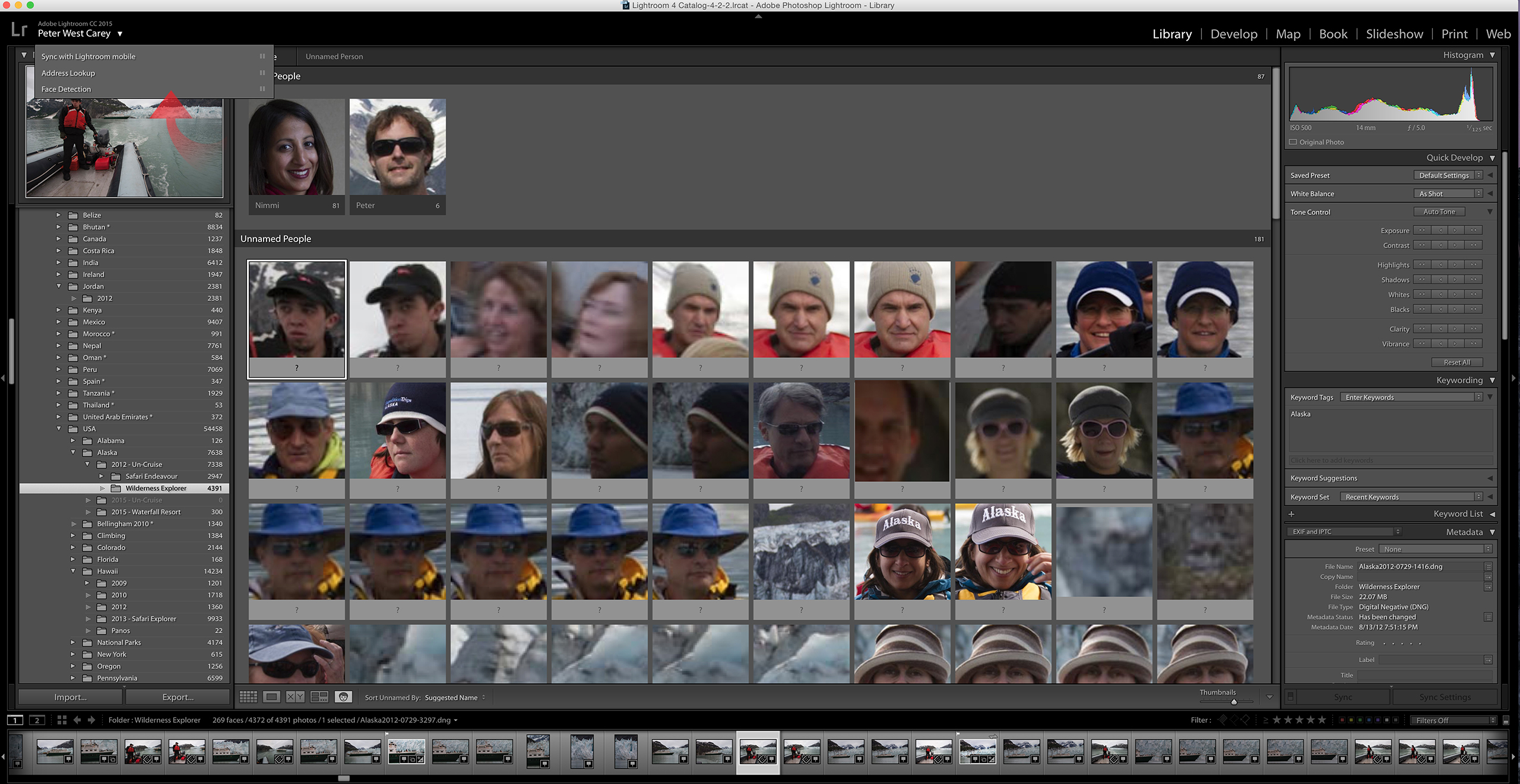
Unpause the process and then click the People View (keyboard shortcut O) icon at the bottom of the toolbar.
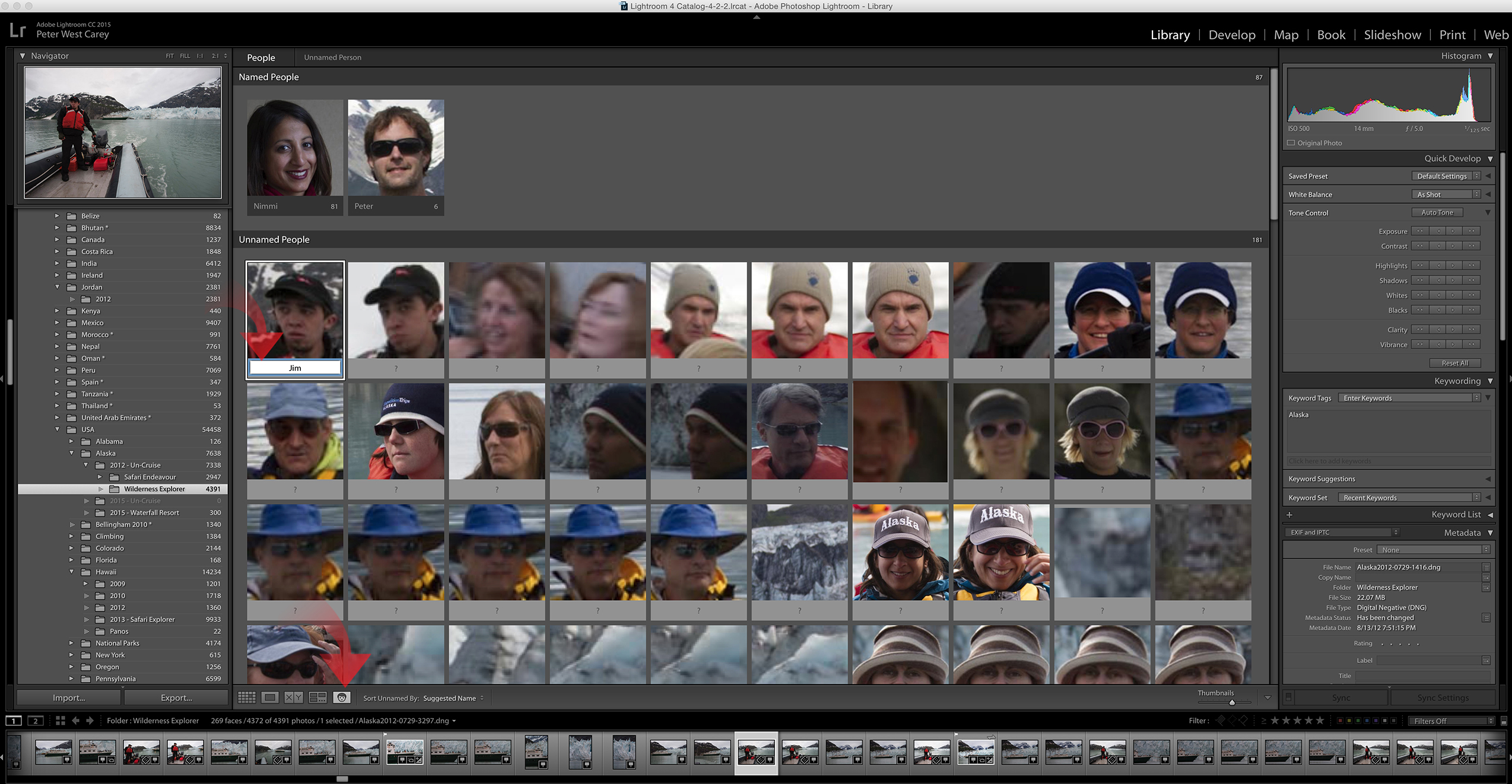
Your screen will start to fill with images of faces Lightroom can find in your current folder! It’s certainly exciting the first time around. In this example, I am using images shot on assignment for UnCruise Adventures in Alaska and I will be giving cruise guests fictional names.
The Upfront Work – Telling Lightroom Who Is Who
As you can see from that screenshot, I have some work to do. For one thing, no one (other than my wife and I) has names. Second, some of those images are not faces, clearly.
The first thing to do is to start telling Lightroom who is who. It will learn after each entry you make, and you will start to notice some suggestions come up instead of all of the ? initially filling your screen.
To make a manual entry, simply click on the open space below a person’s face and start typing a name (I suggest using both first and last name for everyone except immediate family). In this example, to speed things up, everyone gets one name.
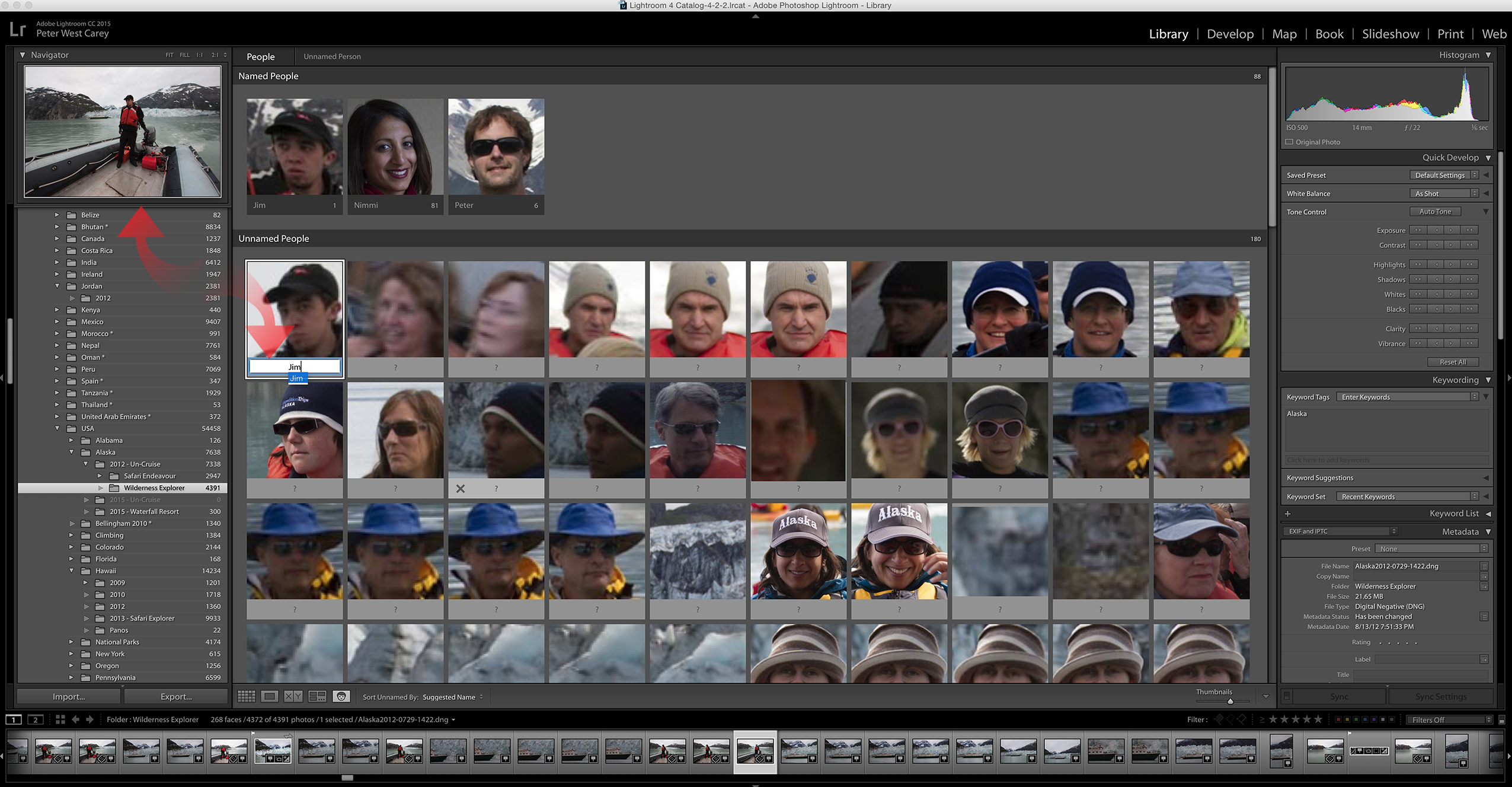
There are three things to note in this screenshot. From the bottom up:
1) To enter a name just type and press enter.
2) There are 2 images in this stack. This is a handy feature whereby Lightroom stacks extremely similar images, saving us time. When I name one, I name them all.
3) When I highlight the face, the Navigation pane shows me the full image.
After I press enter for Jim’s name, I get this.
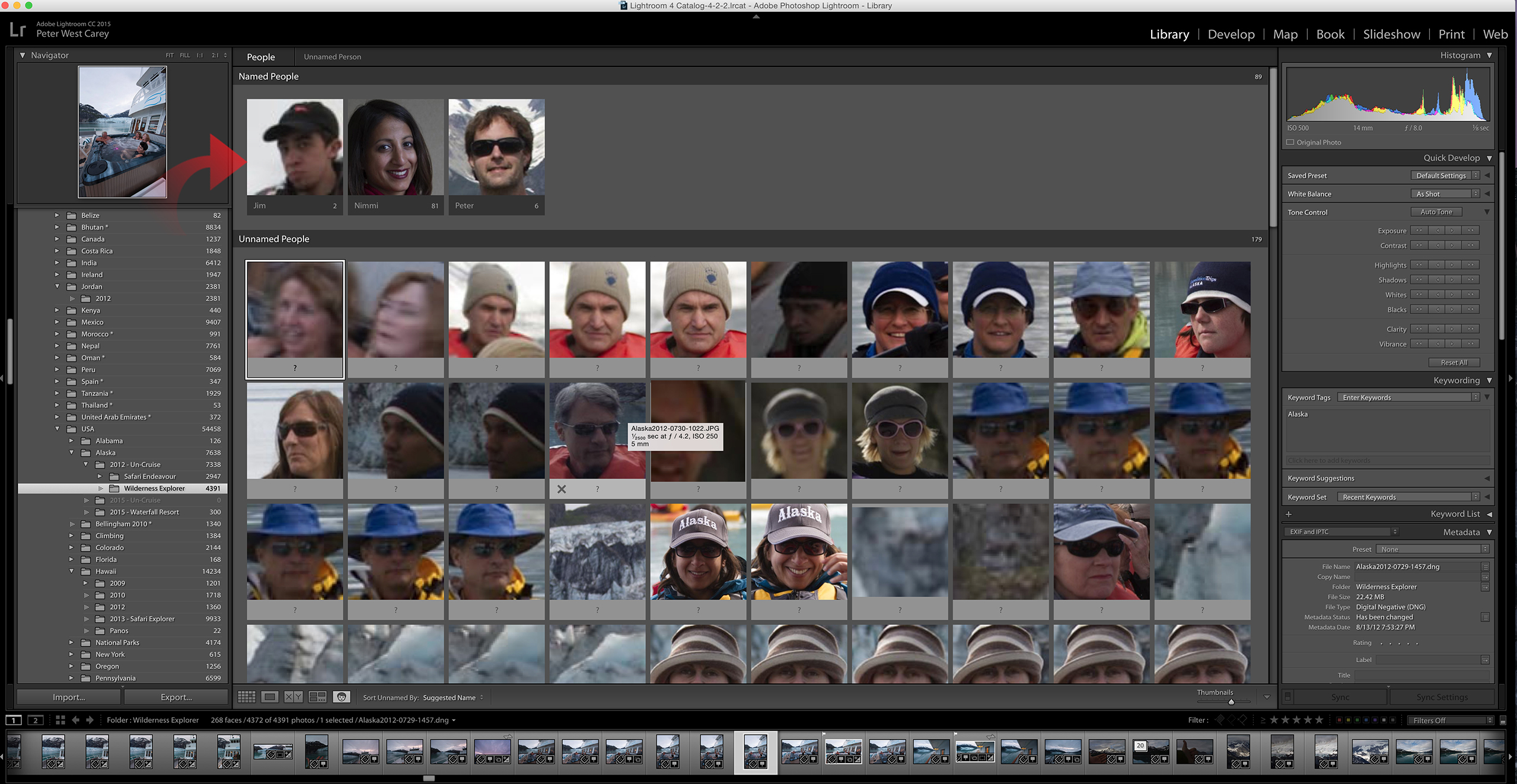
Jim’s previous face is moved up top to the Named People section and the next in line in the Unnamed People section is highlighted. What’s nice is Lightroom focuses the cursor on the data entry box for this person, making continuous entry easier. As you type each name and hit Enter, that person will move to the top, and you’ll be ready for the next without having to mouse around the screen!
Now, let’s fill in some names and we’ll see what Lightroom does with the new info.
Setting Lightroom Straight
Okay. I’ve entered in a few more names on images by just clicking and typing a name.
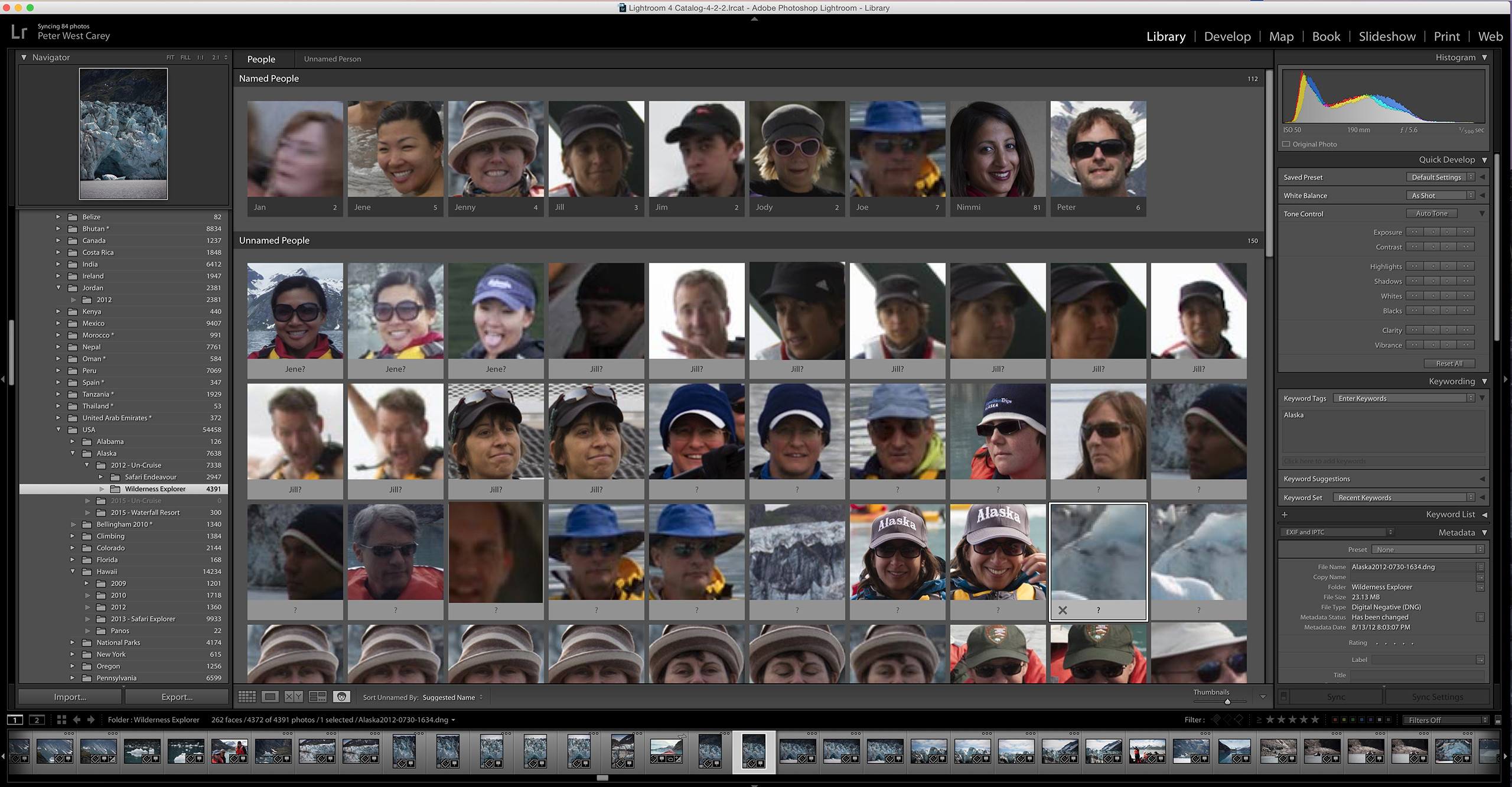
Lightroom is now guessing some names (some are right, some are not) and we have many more faces up top in the Named People section. Great! As Lightroom has taken some guesses, let’s let it know how it did. When I hover over the first image of Jene, I get two options next to her guessed name (note: A guess will always have ? after the name).
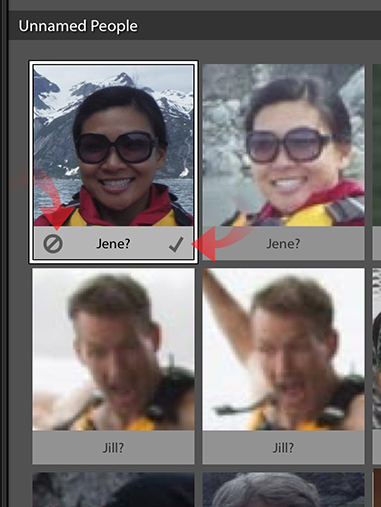
A circle with a line through it and a check mark. If I click the circle with a line Lightroom will know that it guessed wrong and learn from its mistake. If I click the check mark, that means Lightroom got it right, and it will continue trying to find matches while placing this image of Jene up in the Named People section.
But Lightroom got some names wrong. It labeled some images of Jene as Jeremy. All I have to do to correct this is click on the name and start typing the correct name. Lightroom has an autocomplete function, and as soon as I type J you will see a list of all the J names I have used.
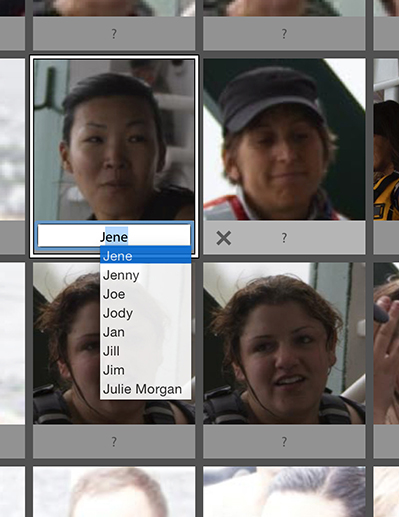
You can either finish typing the name of just pick from the list.
Speeding Things Up With Batches
Part of the miracle that is Lightroom is its ability to make repetitive steps something best handled in batches. In this case, I can click on an image of one person, and then Command (Mac) or Ctrl (PC) click on other images of the same person.
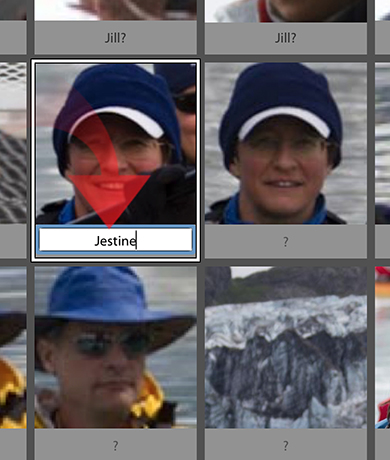
Here I highlighted four photos, denoted with a white outline around each, and typed in Jestine’s name. After pressing Enter, all four images move up to the Named People section! Not only can you name people using this clicking method, you can tell Lightroom to ignore images as well. For instance, we have a lot of cruft in this catalog; images marked as faces but are clearly not faces.
We can use the same batch technique to remove these guesses. Highlight each image using the appropriate click and Command/Ctrl click function to select images. Then click the X while hovering over one of the selected images.
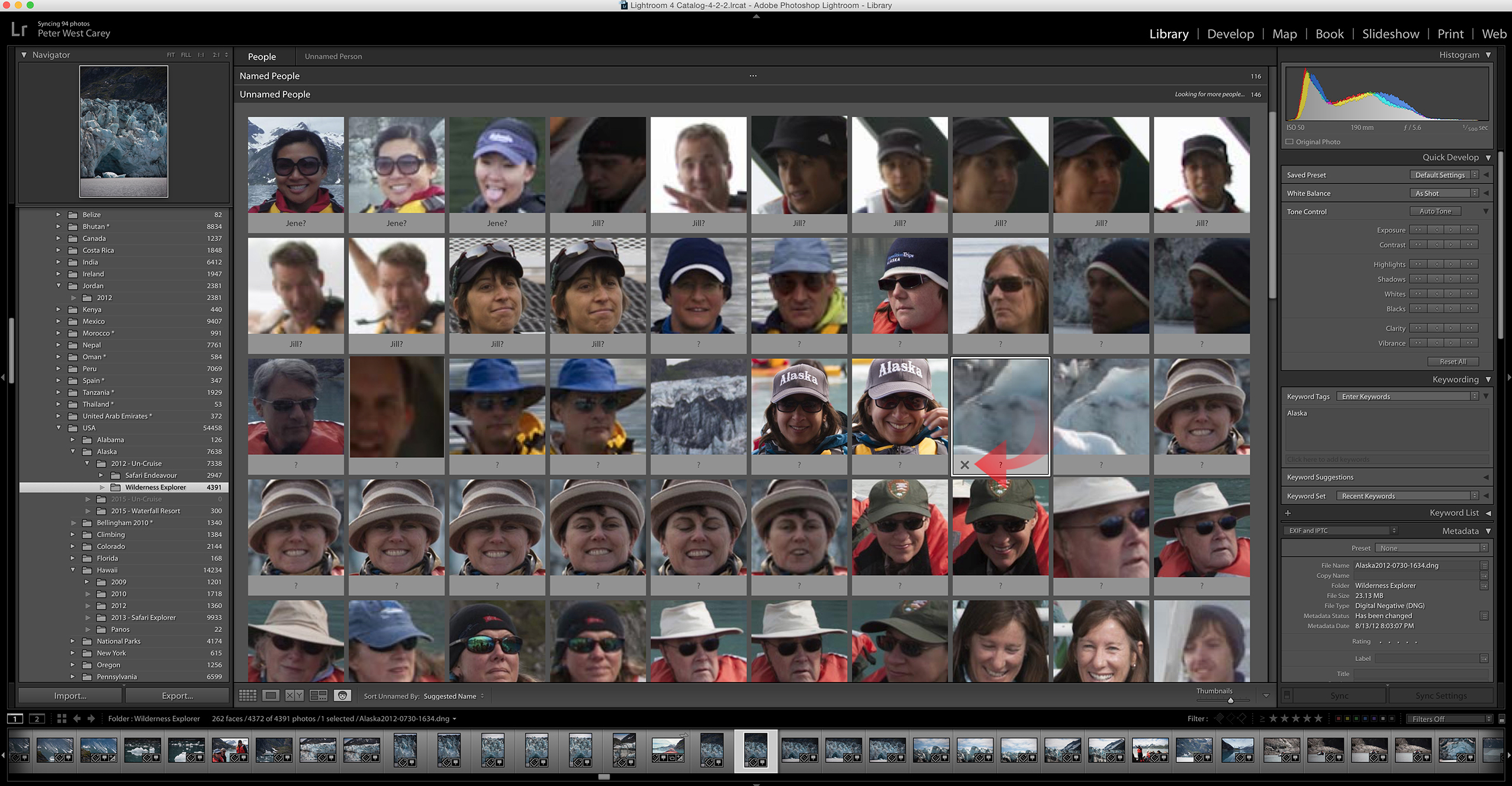
Poof! They all go away.
Lastly, you can use this batch feature to let Lightroom know to exclude someone from being identified. For instance, Lightroom thought the gentleman here resembled Jestine but let’s pretend he is just someone in the background of our image, someone we don’t want to include in our catalog, ever.
You highlight the images you want to exclude and click on the circle with a line through it.
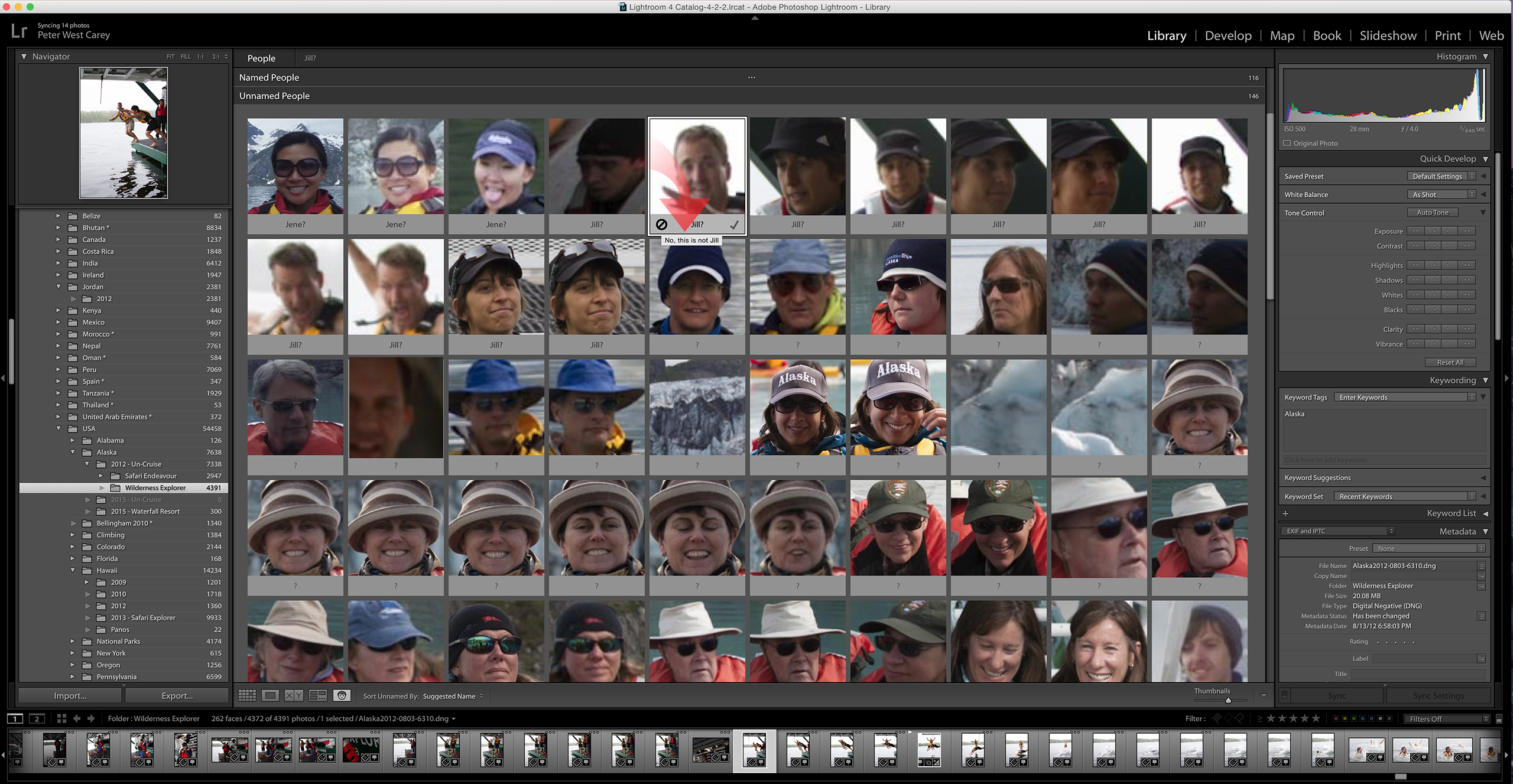
With the names cleared out, click on the X to delete the face recognition region from the image.
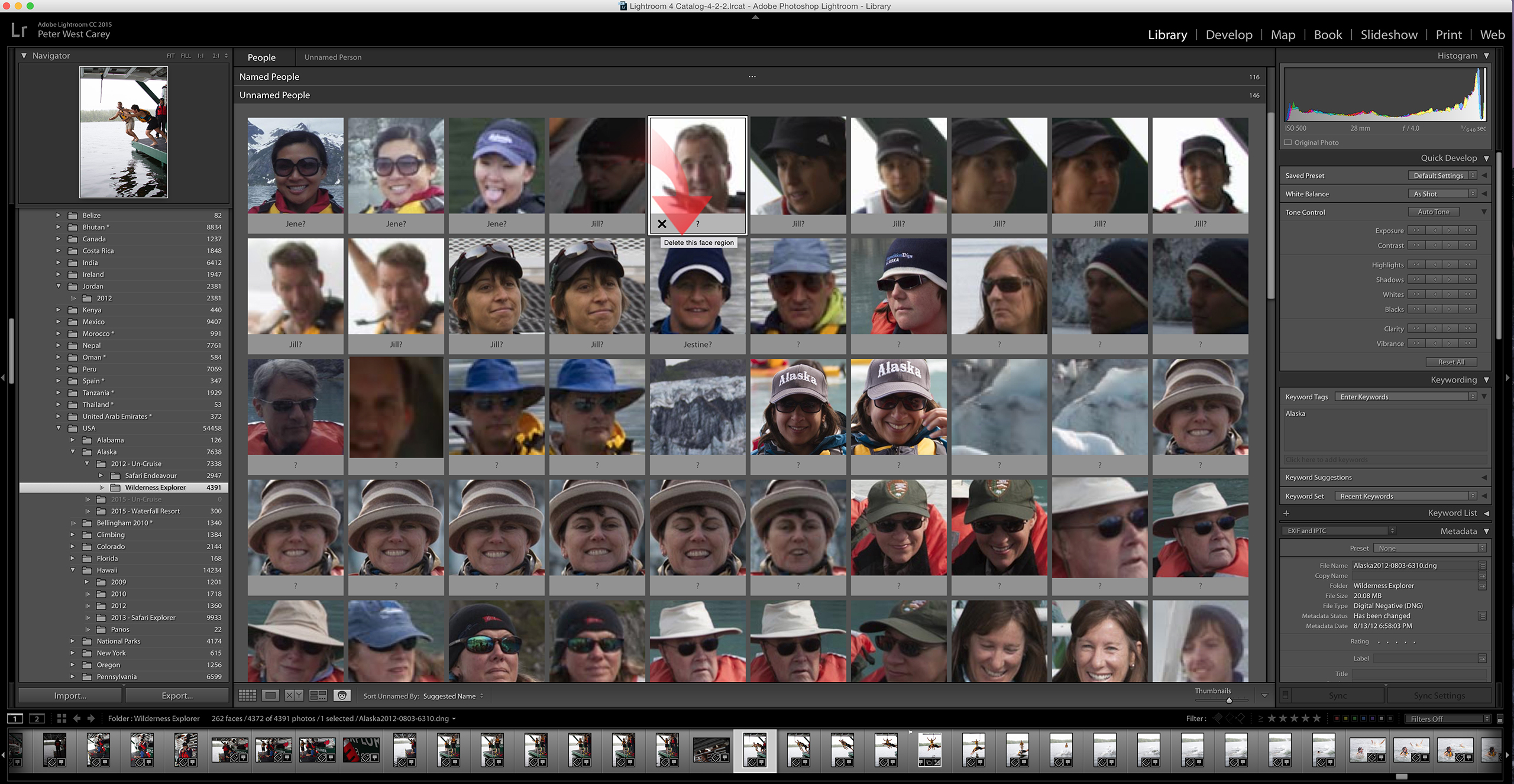
Manually Adding People
What about when Lightroom fails to find a face that you know is there?
From Loupe view in your Library module (keyboard shortcut E), you will notice a little drawing box in the toolbar.
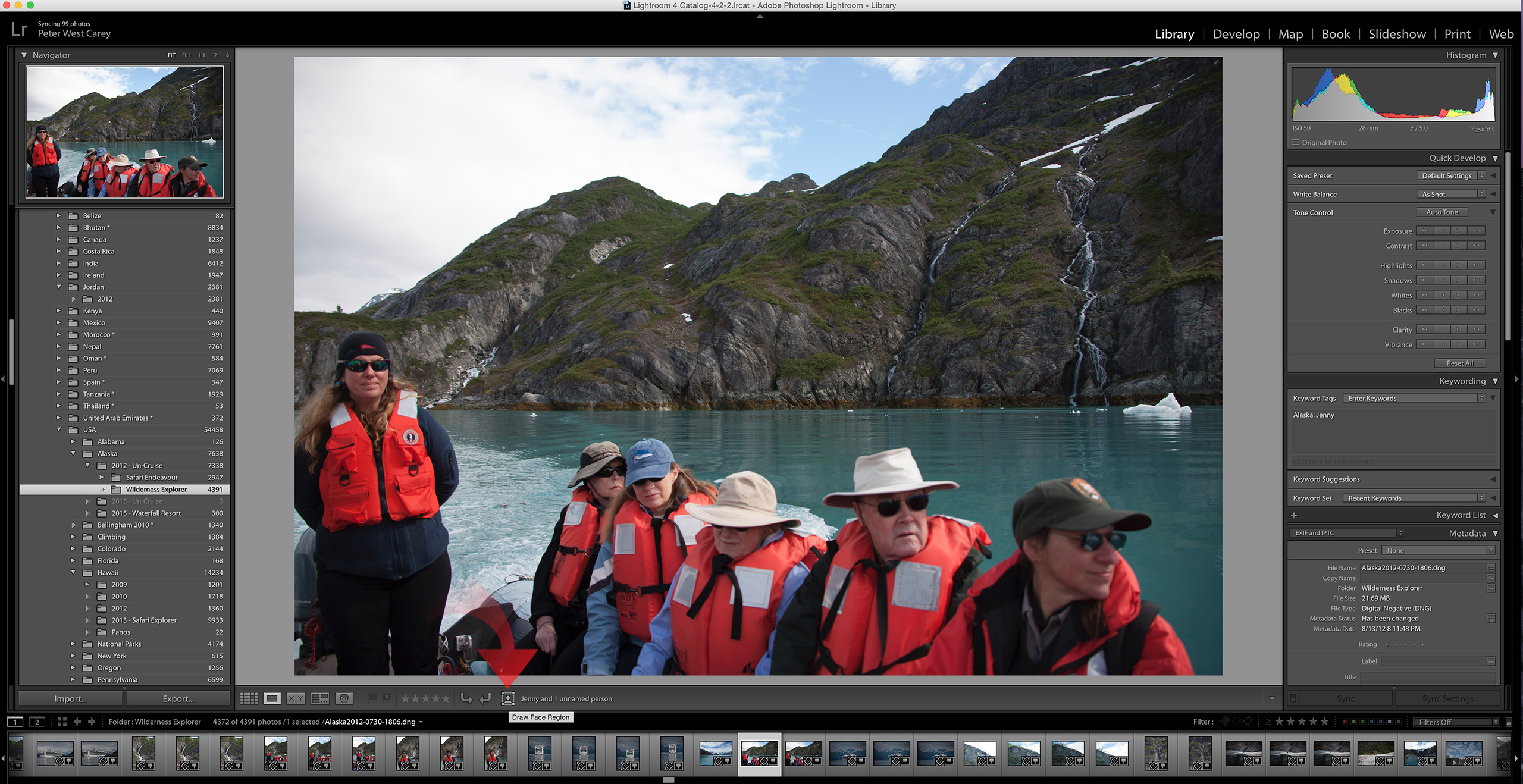
Then notice we get one face with a ?, indicating Lightroom knows this is a face, and we just need to apply a name as we did in the previous section.
But the other face is not recognized. To remedy this, draw a box around the person’s face, and Lightroom will immediately ask you for a name.
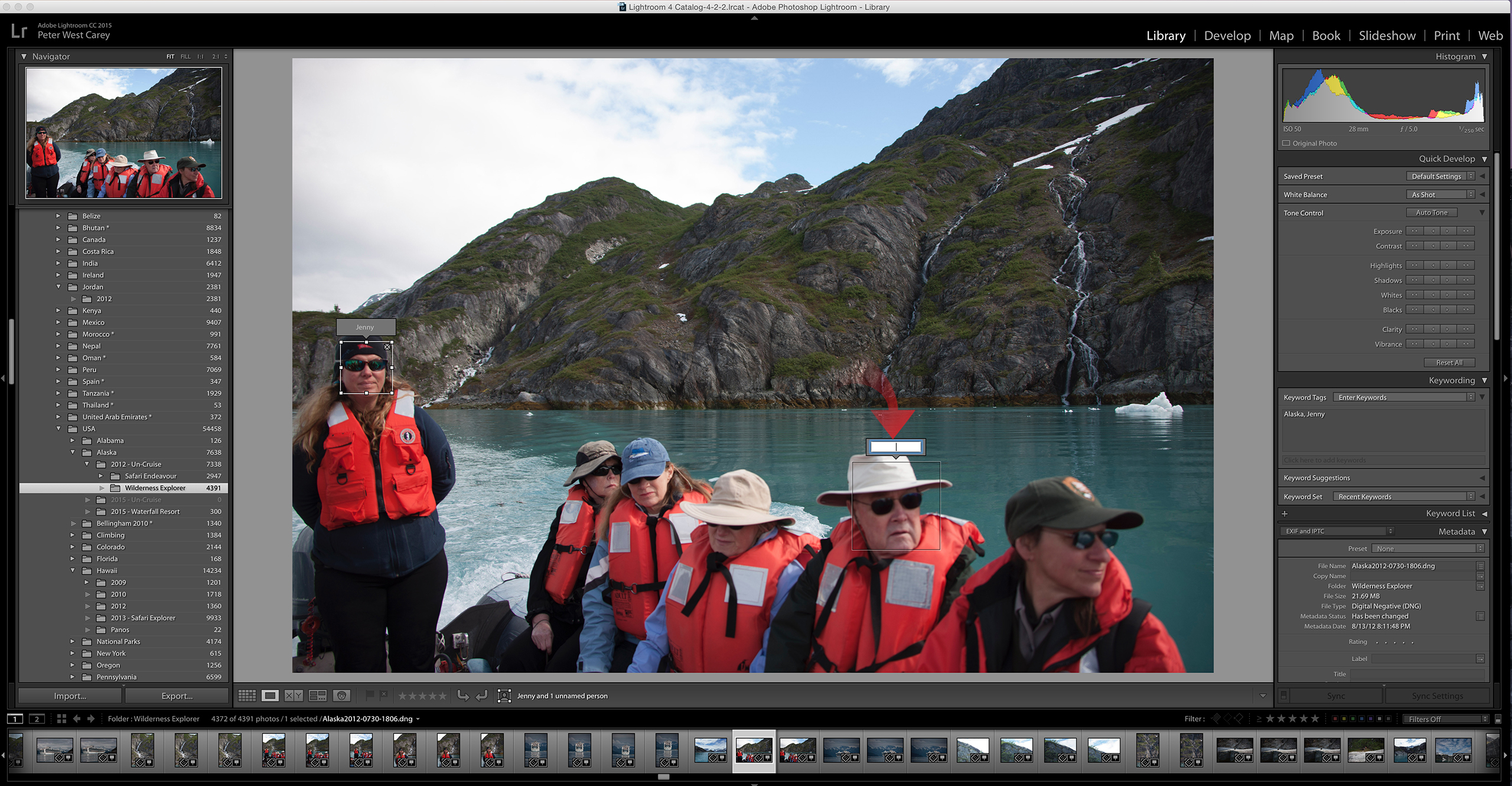
One last way to batch process images is to highlight images of the same person in the Unnamed People section and click & drag them over the correct person’s name in the Named People section.
Finding People
Now that you have people tagged, how do you find them?
Lightroom uses a special keyword for names. Yes, the person’s name will appear as a keyword (see image below).
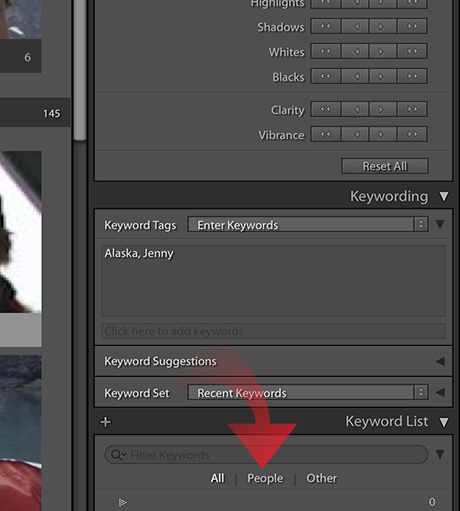
In this case, I highlighted Jim, and when I scroll down to the J’s, I find him! This filter, clicking on People in the Keyword List section, is helpful for ignoring all the other hundreds of keywords and just finding people.
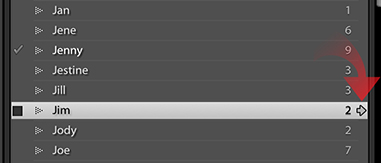
When you find Jim, you’ll also see a little arrow on the far right. If you click on that arrow, it will show you all (2) of the images tagged as Jim.
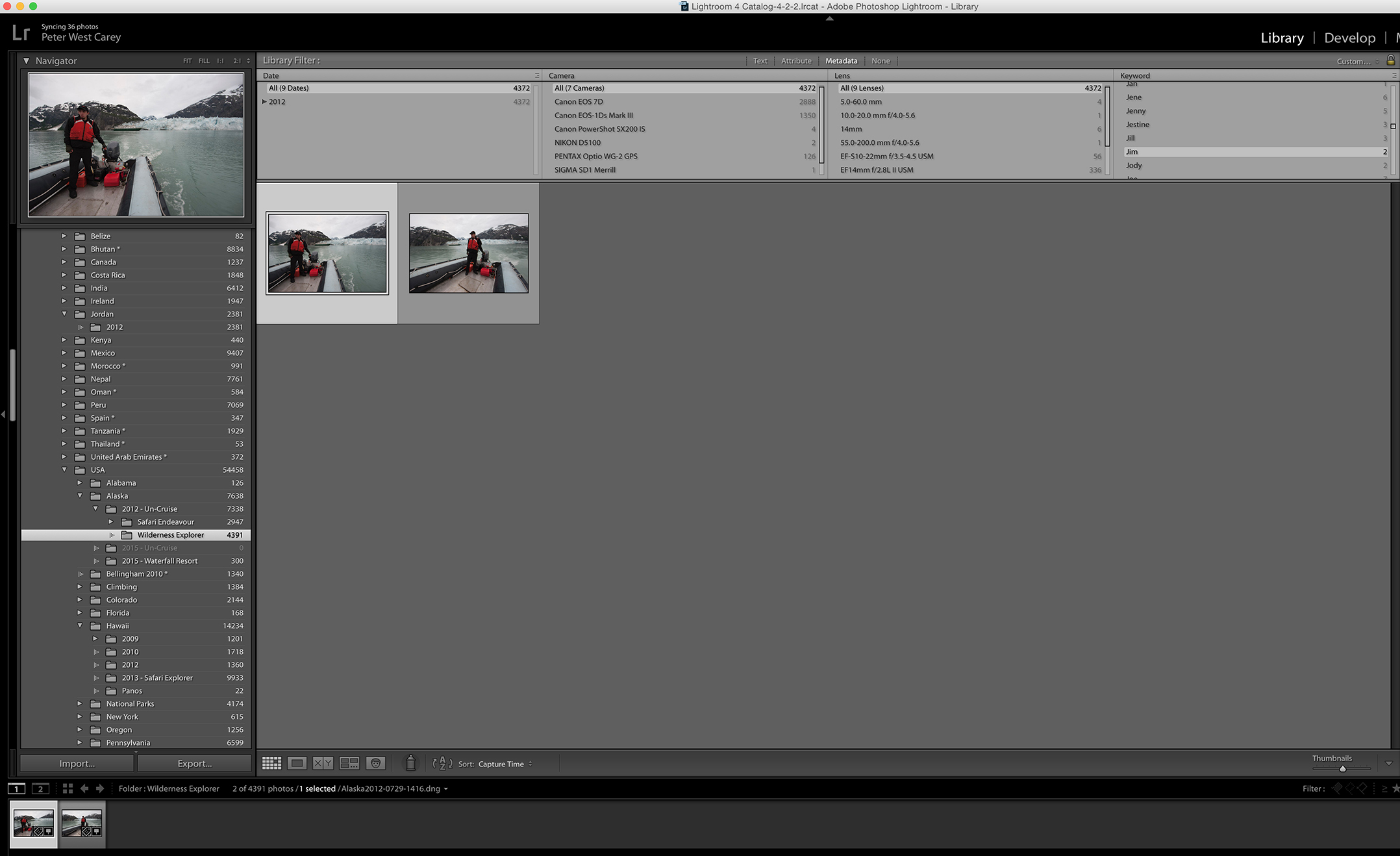
Presto! As you tag more and more examples of a person, they will all start to appear.
Last Minute Tips
The facial recognition feature works not only for current images, but it can be used over years of photos of kids, learning a little better each time; so you can find that picture of your child three years ago.
Also, Lightroom has an option to suppress the exporting of the name as a keyword. When you go to export an image, look for this check box in the image below:
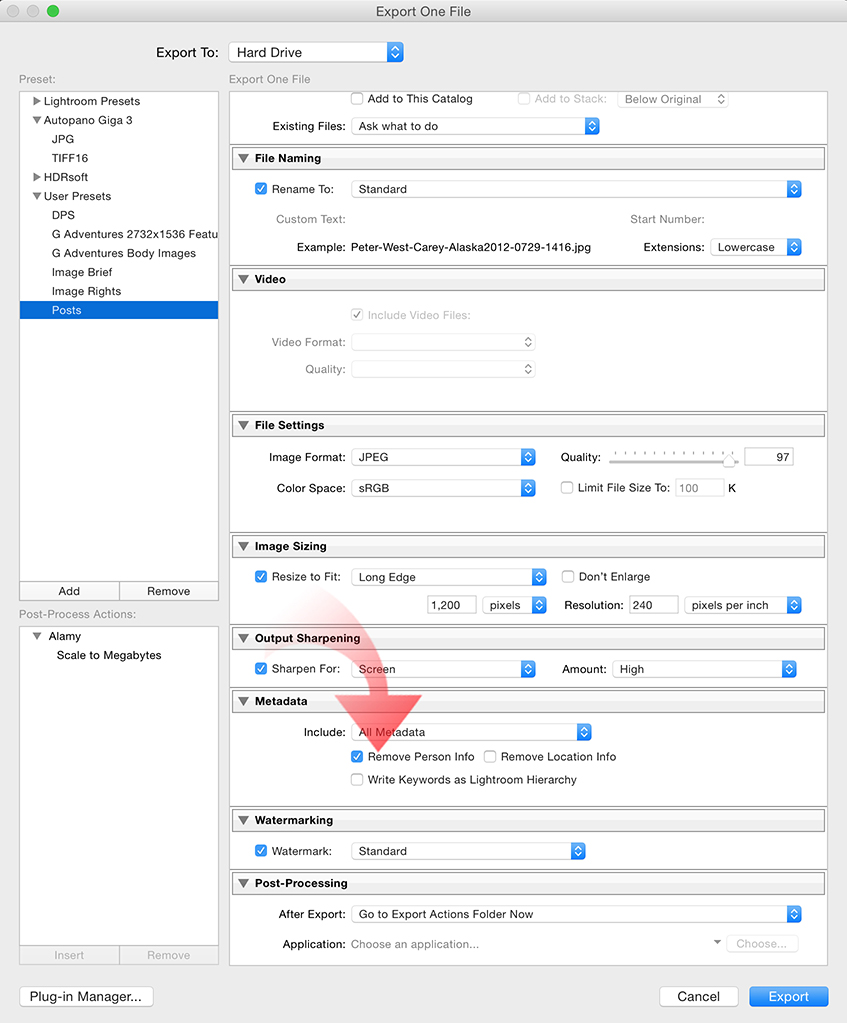
The ensures the person’s name is not exported with the other keywords.
Lastly, double clicking any person’s face while in People View will bring up the image in which the face appears.
Face Recognition has been a boon for me to organize my family photos (especially all the cousins, nieces, nephews, and others) as well as past client shoots. I can use the keywords as a filter and quickly find any image of, say, my wife and our two kids. Or just my parents.
It’s a great tool for organizing and pinpointing the special people in your images. It can also help revive some old photos you have ignored for years.
